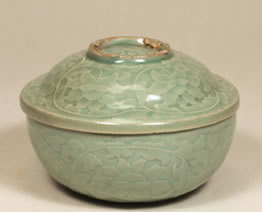“Japan’s 1910-45 colonial rule of Korea should not be justified and war atrocities by Japanese troops should not be glossed over”, South Korean president Kim Dae Jung said. South Korea and China requested that changes be made to 43 items in a history textbook that was written by the Japanese Society for History Textbook Reform. The Japanese government replied that controversial middle school history textbooks contain no obvious errors in regarding section contemporary history, although certain parts concerning ancient Korean history do need to be revised. Regarding the other passages, however, which are mainly about modern history, the Japanese government called for the understanding of the two countries, stating that the passages do not contain blatant errors, and therefore cannot be subject to revision under the textbook authorization. Was the problem with Japanese history textbooks resolved by each country criticizing each other? Errors in the modern history are ascribed to World War II, and are producing ill-informed people. Here is a story leading to another resolution of the problem.
The Museum of Oriental Ceramics, Osaka, was founded in November, 1982, in order to house and exhibit the world-renowned Atoka Collection of oriental ceramics. The museum also commemorates the donation of the entire Ataka Collection by the twenty-one companies of the Sumitomo Group to the city of Osaka. The museum collection holds about 2,000 individual pieces, consisting mainly of Chinese, Korean and Japanese ceramics. Fifteen pieces are registered either as National Treasures or as Important Cultural Properties of Japan. The Annex building was built in March, 1999, in order to exhibit the Japanese ceramics collection and the Rhee Byng-Chang Korean ceramics collection. In terms of both quality and quantity of pieces, the museum collection ranks as one of the finest in the world.
Dr. Rhee is a Korean national who has lived in Japan since 1949. His career included serving as a diplomat, obtaining a doctorate in economics, and operating a trading company. He spent half of his life assembling a collection of 301 pieces of Korean ceramics and 50 pieces of Chinese ceramics. He spent a long time carefully considering where to leave his collection and how to put it to the best use; as a result of his deliberation, he decided to donate the entire collection to the Museum of Oriental Ceramics, Osaka. In terms of quality, Dr. Rhee’s collection of Korean ceramics is among the world’s top private collections. The addition of the Rhee collection to the Ataka Collection is of immeasurable value in enriching the quality of the Museum's collection.
One of Japan’s neighbors is Korea, in which there is a Korean company concerted with my company. From it, a Korean staff member came to Japan to study drug development in our pharmaceutical company. Just prior to his journey home, I invited him to go to the Museum of Oriental Ceramics. Thanks to the generosity of Dr. Rhee, the museum is now the world’s foremost center for the appreciation and research of Korean ceramics outside of Korea itself. So, I had expectated that the exhibition of ceramics produced in his mother country would delight him and become a good memory for him. On one day in spring, we had an opportunity to visit the museum. In the museum, he was very surprised at the Rhee collection.
“I have never seen such a large scale exhibition in South Korea”, he said.
Both its quality and quantity seemed to be beyond his expectation.
“Why is an exhibition in a foreign country superior to that of the home country?”, I asked curiously. After a short silence, he answered.
“For several decades, many national treasures and culturally important properties have been removed from our country to your country under the control of Japan.”

Celadon with Carved Peony Scroll Design
Deep grief is hidden in the splendid Korean Ceramics. In World War II, Japan invaded Korea by force to become the leader among Asian countries. The Japanese troops took Korean people to Japan compulsorily. After World War II, Korea was divided into North and South Korea. Because antagonism between U.S.A. and U.S.S.R./China caused a civil war between both Koreas, the Korean people taken could not help living in Japan and gave up on returning to their mother country. Although Japanese people should expiate against trampling upon their human rights, many Japanese treat them with discrimination unreasonably. Dr. Rhee apprehended the position of the Korean residents in Japan, and hoped that his gesture would help them take pride in their art and other accomplishments of their native country. Furthermore, his collection reflects Introspection and makes a great impression on us. In the future, his collection will cure Japanese of the racial discrimination against Koreans, and bridge the unfortunate gap between our countries. I believe that the action of Dr. Rhee will lead us to resolve the problems from World War II by causing us to respect each other. Finally, I can not help hoping that visitors to the museum would understand not only the beauty of Korean ceramics but also the noble mind in them.
Top of Page
|
